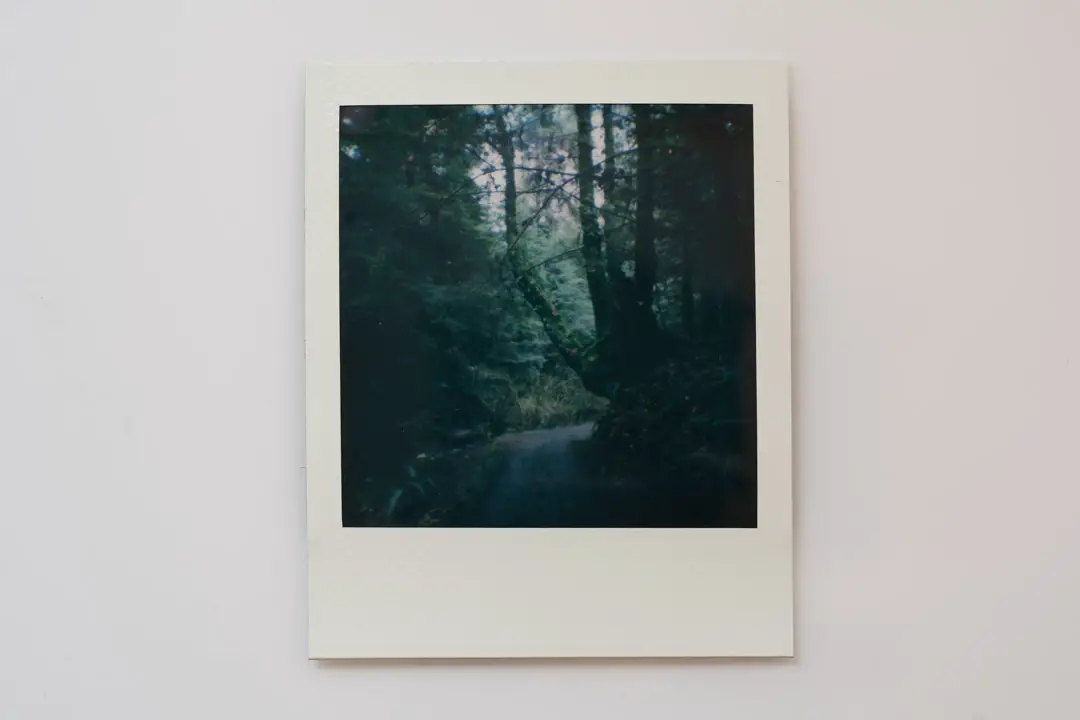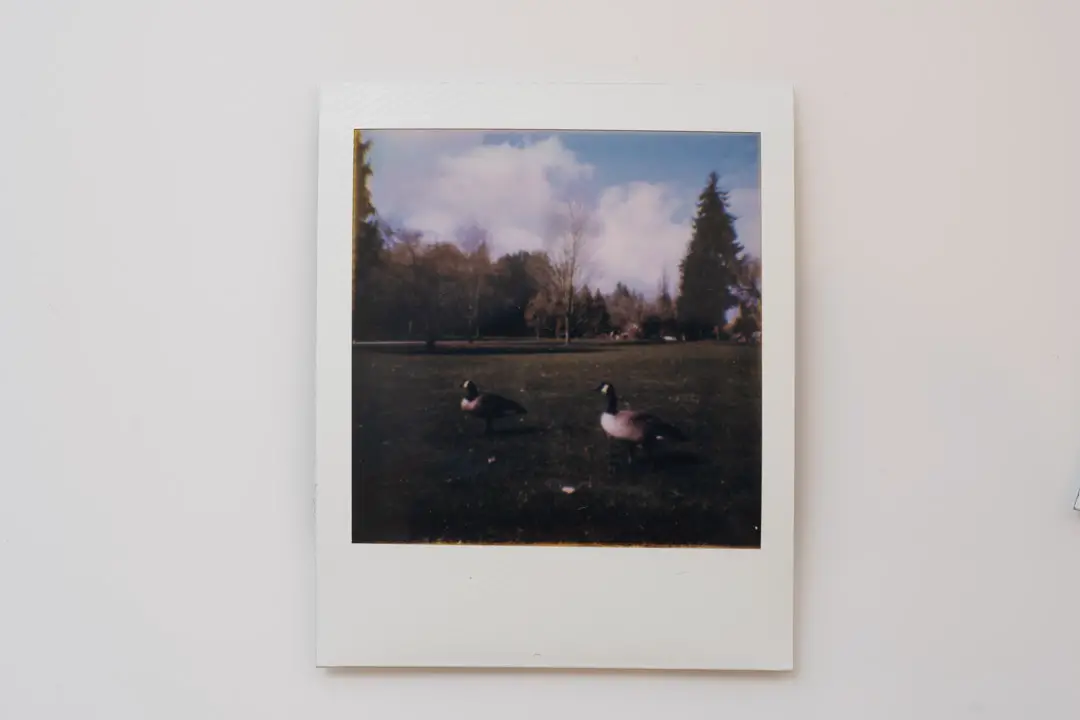Polaroid is one of the most incredible photographic mediums on the planet. When this technology came out, it turned heads and became an instant classic. Everyone back in the ‘70s had a Polaroid camera in their pocket — including great artists like Andy Warhol, Helmut Newton, and thousands of others.
It’s amazing that Polaroid is still able to exist in 2022, but the prices for film have gone through the roof. To help keep people shooting instant film, Polaroid announced the Polaroid Go back in April 2021. The Polaroid Go film is approximately half the size of SX-70 or 600 film and comes in packs of 16 shots instead of 8 for the same price.
But is the Polaroid Go worth it?
The Polaroid Go is an incredibly cute camera with great features like double-exposure mode and a self-portrait mirror. This camera takes nice portraits, but not much else. Images are consistently blurry, underexposed, and have an unnaturally warm tone. Most users will be disappointed for the price.
Getting more photos per roll is a major benefit of this camera, but its use case is so limited to close-up portraits or landscapes on rainy days. Trying to get more than two people in the frame will typically result in underexposed, or blurry images.
Find the Polaroid Go kit with film on Amazon here for the best price.
Here’s my full review after using this camera for a month.
Who is the Polaroid Go camera for?
The Polaroid Go is designed for people who love instant film, but want a smaller form factor than the traditional Polaroid and Fuji Instax cameras.
The Polaroid Go easily fits into a jacket pocket, backpack, or purse. It also has a sturdy exterior that feels like it can take a few bumps and bruises without falling apart.
The camera is perfect for celebrations with friends and family, and for capturing memories on the go. The images have a soft warm aesthetic that makes them great for portraits and capturing fun moments with the flash.
This camera is not designed to be used for landscapes, architecture, or in low light without the flash. There is no tripod mount on the bottom, meaning it won’t work in dimly-lit scenes requiring the use of its maximum 1-second shutter speed.
| Pros | Cons |
|---|---|
| Great design, simple operation, feels secure in your pocket. | Smallest instant film format |
| 16 photos per pack of film | Camera always exposes for the brightest part of the image (often resulting in underexposure) |
| Comes with built in flash, strap, and frog tongue | Flash isn’t powerful enough |
| Double exposure mode | Fixed focus means you can’t take sharp images up close |
| Rechargeable battery | No black and white film available (yet) |
| Mirror on the front makes selfies easy |




What features did Polaroid add to the Polaroid Go camera?
The Polaroid Go is designed to be the cheaper alternative. The camera price point is placed just under the larger, feature-packed Polaroid Now+, which uses the iType and Polaroid 600 film, autofocus, and manual exposure modes through the Polaroid app.
But the primary cost savings of the Polaroid Go is not in the camera itself, but in the film. The smaller film comes with 2 cartridges each containing 8 Instant photos for the same price as the i-Type and Polaroid 600 film.
Polaroid Go film is the same ASA 640 film speed as i-Type film, but has a 1.851 x 1.811 inches image area, compared to the i-Type’s 3.1 x 3.1 inches. The camera features a 34mm lens with aperture values ranging from f/12 to f/52, and shutter speeds ranging from 1 second to 1/300 of a second (according to the manual).
The camera is also powered by a built-in lithium-ion battery that can easily power the camera for up to 15 packs of film on a single charge through the Micro-USB port.

How to use the Polaroid Go camera
The Polaroid Go is a point-and-shoot camera, meaning all you have to do is turn the camera on, line it up with your subject, and press the big red button to take a shot.
The film is protected by the built-in frog tongue, which shields the film from light for the crucial first 5 seconds. After shooting, remove the film from underneath the frog tongue and place in a dark place for 10-15 minutes while the image develops.
The camera has a built-in flash that can be turned off using the flash button on top. The dot beside the frame counter will disappear when the flash is deactivated.
Pressing that same flash button twice will active double-exposure mode, which is indicated by the frame counter resetting to a flashing 1. And if you hold the flash button, the camera will turn on a 10-second self-timer, indicated by the red light underneath the flash.
The Polaroid Go is also built with selfies in mind. The camera has a one-way mirror built into the viewfinder screen which can be used to frame up the image even in bright light.

How do I get the best images with the Polaroid Go?
The Polaroid Go takes the best images with close-up subjects and portraits. The film is small, so you have to get close and fill the frame to get the most out of it.
The flash is underpowered and will underexpose your subject if they’re even two meters away. The best way to take portraits with this instant film indoors is to ensure the subject’s head takes up the majority of the frame, and you can see the tops of their shoulders.

Outdoors in bright sunlight, the Polaroid Go is a little more forgiving, but the abysmally low dynamic range can present problems. You can take a full-body shot in full sun, though harsh shadows under the eyes will often remain completely black, so this camera needs even lighting to create a good image.
In my testing, however, the camera didn’t work that great even on overcast days when the light is as even as it gets. Bright light is a requirement if you’re not able to use the flash.
For landscape images, this camera always meters for the brightest object in the image. If there’s even a bit of sky in the image, you can almost always expect that the camera will underexpose the trees, buildings, or people in the foreground. Always try to take landscapes in bright daylight instead of at dawn or dusk.

Why I don’t recommend the Polaroid Go instant camera
The Polaroid Go gets a lot of things right. The form factor, the price, features, and styling of the camera are all exactly what we needed to keep buying Polaroid film. However, I can’t recommend the Polaroid Go instant camera because the image quality is just not good enough.
This automatic camera underexposes in almost every situation — leading to bad photos in even lighting. The flash is also not strong enough to get make a proper exposure with more than two people in the frame, making it difficult to use unless the conditions are perfect.
The Polaroid Go will be an amazing camera for the people who know how to use it perfectly, which may mean bringing in some of your own lights. But it is not an everyday camera for regular people who just want to wander the streets and create memories — which just so happens to be this camera’s target audience.
I’m torn if I’ll keep trying this camera. I still have one pack of film left, but it likely won’t be more than a shelf ornament after that.

By Daren
Daren is a journalist and wedding photographer based in Vancouver, B.C. He’s been taking personal and professional photos on film since 2017 and began developing and printing his own photos after wanting more control than what local labs could offer. Discover his newest publications at Soft Grain Books, or check out the print shop.


I wonder if you couldn’t put a piece of smoked film over the light sensors and force it to over-expose. I do know completely blocking the sensors with electrical tape will cause 100% pure white photos if taken in bright sunlight.
I mean, it’s possible, but it would be really difficult to make it work perfectly. There’s such a small latitude with Polaroid film that makes it difficult to work with something like that. The best way would be if there could be some kind of filter that would only block bright light while allowing low-intensity light through. But I’m not sure if that’s possible.
So which polorid would be best for my son, who wants one for Christmas?
Hi Patti,
I’d highly suggest the Polaroid One Step Camera like these ones on Amazon. I don’t recommend the new OneStep 2 Cameras, as they have similar problems to the Polaroid Go camera.
Regards,
Daren